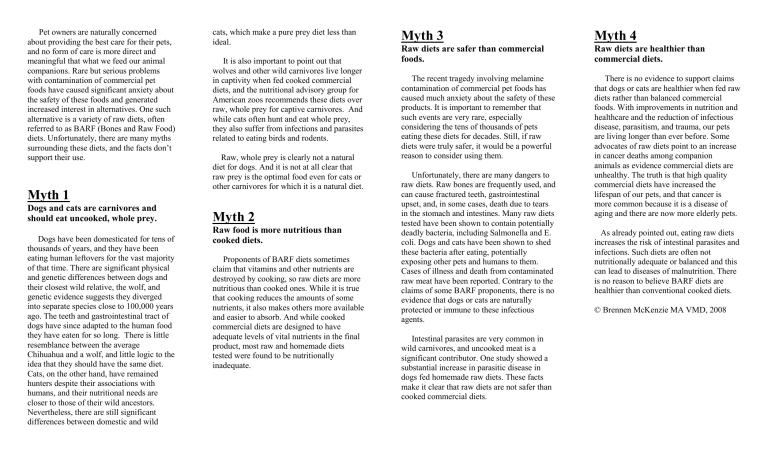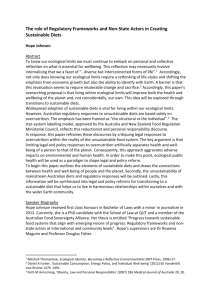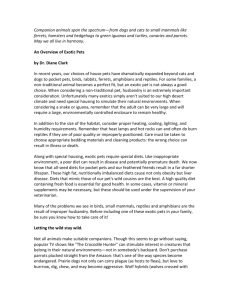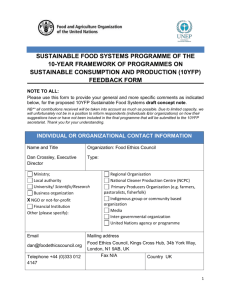Pet owners are naturally concerned about providing the best care for

Pet owners are naturally concerned about providing the best care for their pets, and no form of care is more direct and meaningful that what we feed our animal companions. Rare but serious problems with contamination of commercial pet foods have caused significant anxiety about the safety of these foods and generated increased interest in alternatives. One such alternative is a variety of raw diets, often referred to as BARF (Bones and Raw Food) diets. Unfortunately, there are many myths surrounding these diets, and the facts don’t support their use.
Myth 1
Dogs and cats are carnivores and should eat uncooked, whole prey.
Dogs have been domesticated for tens of thousands of years, and they have been eating human leftovers for the vast majority of that time. There are significant physical and genetic differences between dogs and their closest wild relative, the wolf, and genetic evidence suggests they diverged into separate species close to 100,000 years ago. The teeth and gastrointestinal tract of dogs have since adapted to the human food they have eaten for so long. There is little resemblance between the average
Chihuahua and a wolf, and little logic to the idea that they should have the same diet.
Cats, on the other hand, have remained hunters despite their associations with humans, and their nutritional needs are closer to those of their wild ancestors.
Nevertheless, there are still significant differences between domestic and wild cats, which make a pure prey diet less than ideal.
It is also important to point out that wolves and other wild carnivores live longer in captivity when fed cooked commercial diets, and the nutritional advisory group for
American zoos recommends these diets over raw, whole prey for captive carnivores. And while cats often hunt and eat whole prey, they also suffer from infections and parasites related to eating birds and rodents.
Raw, whole prey is clearly not a natural diet for dogs. And it is not at all clear that raw prey is the optimal food even for cats or other carnivores for which it is a natural diet.
Myth 2
Raw food is more nutritious than cooked diets.
Proponents of BARF diets sometimes claim that vitamins and other nutrients are destroyed by cooking, so raw diets are more nutritious than cooked ones. While it is true that cooking reduces the amounts of some nutrients, it also makes others more available and easier to absorb. And while cooked commercial diets are designed to have adequate levels of vital nutrients in the final product, most raw and homemade diets tested were found to be nutritionally inadequate.
Myth 3
Raw diets are safer than commercial foods.
The recent tragedy involving melamine contamination of commercial pet foods has caused much anxiety about the safety of these products. It is important to remember that such events are very rare, especially considering the tens of thousands of pets eating these diets for decades. Still, if raw diets were truly safer, it would be a powerful reason to consider using them.
Unfortunately, there are many dangers to raw diets. Raw bones are frequently used, and can cause fractured teeth, gastrointestinal upset, and, in some cases, death due to tears in the stomach and intestines. Many raw diets tested have been shown to contain potentially deadly bacteria, including Salmonella and E. coli. Dogs and cats have been shown to shed these bacteria after eating, potentially exposing other pets and humans to them.
Cases of illness and death from contaminated raw meat have been reported. Contrary to the claims of some BARF proponents, there is no evidence that dogs or cats are naturally protected or immune to these infectious agents.
Intestinal parasites are very common in wild carnivores, and uncooked meat is a significant contributor. One study showed a substantial increase in parasitic disease in dogs fed homemade raw diets. These facts make it clear that raw diets are not safer than cooked commercial diets.
Myth 4
Raw diets are healthier than commercial diets.
There is no evidence to support claims that dogs or cats are healthier when fed raw diets rather than balanced commercial foods. With improvements in nutrition and healthcare and the reduction of infectious disease, parasitism, and trauma, our pets are living longer than ever before. Some advocates of raw diets point to an increase in cancer deaths among companion animals as evidence commercial diets are unhealthy. The truth is that high quality commercial diets have increased the lifespan of our pets, and that cancer is more common because it is a disease of aging and there are now more elderly pets.
As already pointed out, eating raw diets increases the risk of intestinal parasites and infections. Such diets are often not nutritionally adequate or balanced and this can lead to diseases of malnutrition. There is no reason to believe BARF diets are healthier than conventional cooked diets.
© Brennen McKenzie MA VMD, 2008
"FDA has not seen any objective evidence to suggest that raw meat diets are better than other kinds of diets….[and] does not believe that raw meat foods are consistent with the goal of protecting the public from significant health risks."
Food and Drug Administration
Center for Veterinary Medicine
"All the [raw] diets tested had nutritional deficiencies or excesses that could cause serious health problems….Of equal concern is the health risk associated with bacteria in the raw food diets…”
Freeman, L., Michel, K.
JAVMA March, 2001;218(5): 705
References and More Information
Finley, R. et al. The risk of Salmonella shedding by dogs fed Salmonellacontaminated commercial raw food diets.
Can Vet J 2007;8:69-75.
Food and Drug Administration, Center for
Veterinary Medicine, Pet Food webpage, http://www.fda.gov/cvm/petfoods.htm
Freeman L., Michel, K., Nutritional analysis of 5 types of "Raw Food Diets." JAVMA
March, 2001;218(5): 705.
Joffe, D., Schlesinger, D. Preliminary assessment of the risk of Salmonella infection in dogs fed raw chicken diets. Can
Vet J 2002;43:441-442.
Lauren , S., et al, Computer analysis of nutrient sufficiency of published homecooked diets for dogs and cats. Proc ACVIM
Forum 2005.
Nutritional Advisory Group, American Zoo and Aquarium Association, www.nagonline.net
Robinson JGA, Gorrel C. The oral status of a pack of foxhounds fed a "natural" diet
(abstract). Proceedings. Fifth World
Veterinary Dental Congress. Birmingham,
England, 1997.
Weese, J. et al. Bacteriological evaluation of commercial canine and feline raw diets. Can
Vet J 2005;46:513–516.
Stiver, S. et al. Septicemic salmonellosis in two cats fed a raw meat diet. J AM Anim
Hosp Assoc 2003;39:538-42.
Strohmeyer, R.A., et al., Evaluation of bacterial and protozoal contamination of commercially-available raw meat diets for dogs. JAVMA 2006; 228:537-542.
What About…?
Raw Diets for
Dogs & Cats
Key Points
Domestic dogs and cats are physically and genetically very different from their wild ancestors, and raw whole prey is not the optimal food for them.
Raw food is not inherently more nutritious than cooked food.
Many raw diets tested have been found to be nutritionally deficient or unbalanced.
There are significant risks of bacterial and parasitic infection, broken teeth, and nutritional disorders when homemade or commercial raw diets are fed.
These diets are not safer than traditional commercial pet foods.
While there is no evidence that raw diets benefit our pets, there are clear risks to feeding them.
Though there are many myths suggesting these diets are superior to cooked commercial pet foods, the facts do not support this.
In addition to the risks to our pets, there is a potential risk to humans of serious, even lifethreatening illness from feeding raw pet diets.





